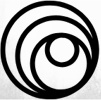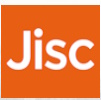In vitro efficacy of different antibiotics against contaminants of tissue-cultured ‘Lakatan’
DOI:
https://doi.org/10.32945/atr4324.2021Keywords:
Bacteria, Fungi, Contaminants, Tissue-culture, 'Lakatan' banana, MeriplantsAbstract
This study aimed to characterize the bacterial and fungal contaminants of tissue-cultured ‘Lakatan’ banana (Musa acuminata) and find out effective antibiotics against these contaminants. This was conducted at the University of Southeastern Philippines, Tagum-Mabini Campus from October 2015 to February 2016.
This experiment was laid out in a Completely Randomized Design (CRD) with five treatments replicated three times. The treatments were: T1-Control; T2-Streptomycin (200mg L-1); T3-Nystatin (1mL L-1); T4-Streptomycin (200mg L-1) + Nystatin (1mL L-1); and T5- Benomyl (100mg L-1). Data were analyzed using ANOVA and compared through HSD.
Results showed that the different contaminants occurring during the initiation stage of tissue-cultured ‘Lakatan’ banana meriplants were composed of Rhizopus sp., an unidentified fungus, and Gram negative bacterium. Generally, 35% contamination was observed on this stage.
The result revealed that colony diameter of unidentified fungus and Rhizopus sp. were inhibited by Nystatin (1mL L-1). While the bacterial clear zone inhibition was increased by Streptomycin. This study elucidated the effectivity of antibiotics, nystatin and streptomycin against bacterial and fungal contaminants of tissue-cultured ‘Lakatan’ banana.
Downloads
Submitted
Published
How to Cite
Issue
Section
License

This work is licensed under a Creative Commons Attribution-NonCommercial-ShareAlike 4.0 International License.











